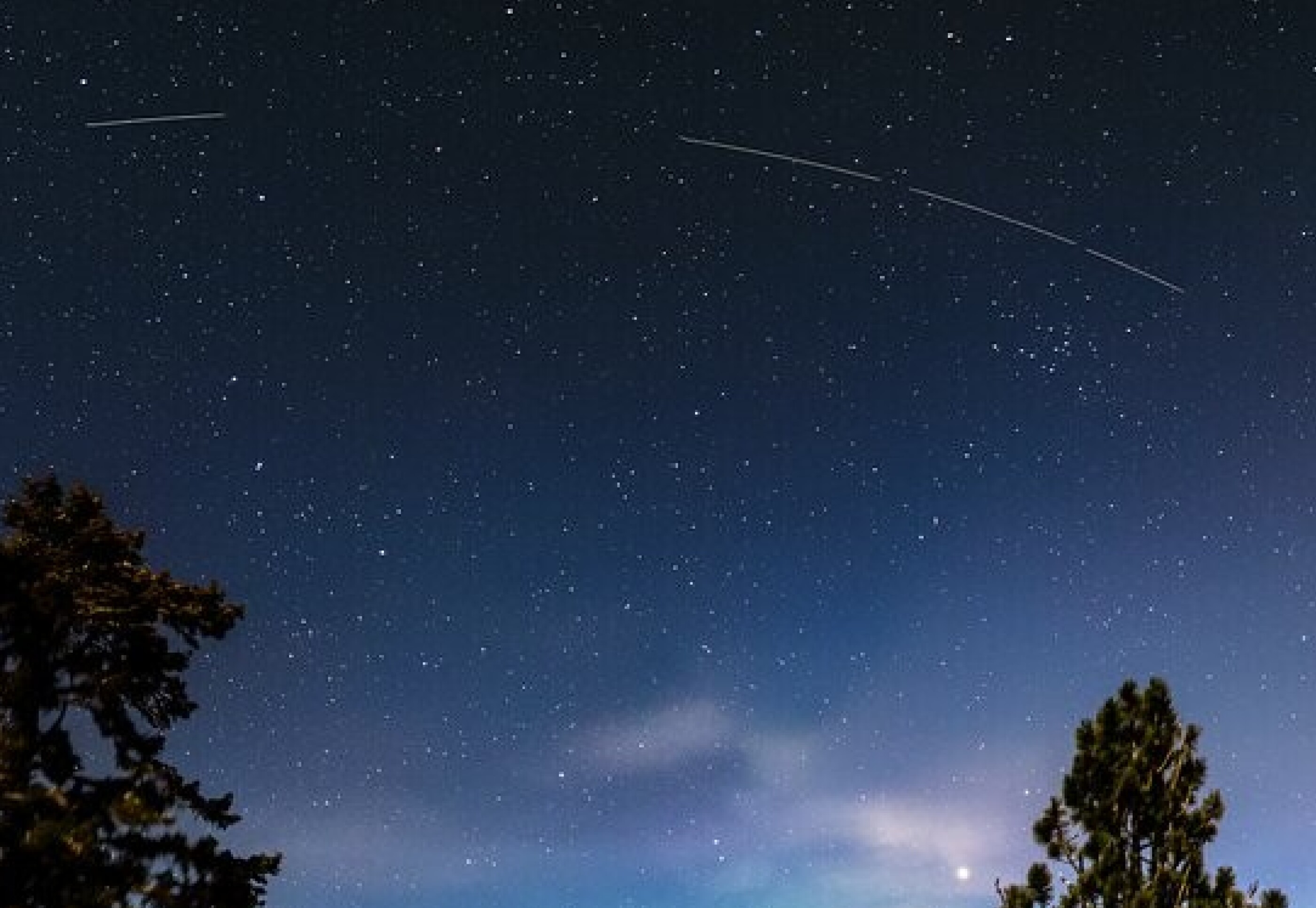
Observations of the BlueWalker 3 prototype satellite show it is one of the brightest objects in the night sky, outshining all but the brightest stars.
Astronomers have raised concerns that without mitigation, groups of large satellites could disrupt our ability to observe the stars from Earth and perform radio astronomy.
Several companies are planning ‘constellations’ of satellites – groups of potentially hundreds of satellites that can deliver mobile or broadband services anywhere in the world.
However, these satellites need to be in ‘low-Earth’ orbit and can be relatively large, so their potential to disrupt night-sky observations is a concern.
Now, an international team of scientists led by astronomers from the IAU Centre for the Protection of the Dark and Quiet Sky from Satellite Constellation Interference (CPS) and including Imperial College London researchers, have published a paper in Nature assessing the detailed impact of the prototype BlueWalker 3 satellite on astronomy.
Dr. Dave Clements, from the Department of Physics at Imperial, said: “The night sky is a unique laboratory that allows scientists to conduct experiments that cannot be done in terrestrial laboratories. Astronomical observations have provided insights into fundamental physics and other research at the boundaries of our knowledge and changed humanity’s view of our place in the cosmos. The pristine night sky is also an important part of humanity’s shared cultural heritage and should be protected for society at large and for future generations.”
Bright observations
BlueWalker 3 was launched into low-Earth orbit on 10 September 2022 by AST SpaceMobile, as a prototype for a planned constellation of over a hundred similar satellites intended for use in mobile communications. Observations taken within weeks of the launch showed that the satellite was among the brightest objects in the sky.
However, to better understand its effects on astronomy, the CPS initiated an international observing campaign. As part of this initiative, both professional and amateur observations were contributed from across the world, from sites in Chile, the US, Mexico, Aotearoa New Zealand, the Netherlands, and Morocco.

Documenting BlueWalker 3’s brightness over a period of 130 days, the newly released data show an abrupt increase coinciding with the complete unfolding of the antenna array, which at 64 square meters is the largest commercial antenna system ever deployed into low-Earth orbit.
A subset of the observations were also used to calculate the satellite’s trajectory over time. Comparing the predicted path with the observations collected, the authors were able to evaluate the accuracy of predictions and how this can change due to factors such as atmospheric drag.
Knowing the positions of the satellites is important, so astronomers can try to avoid them or at least know where they will be in the data. However, mitigating against the brightness is difficult beyond masking their position and losing data for that portion of the sky.
Radio interference
Besides visible observations, BlueWalker 3 could also interfere with radio astronomy, since it uses wavelengths close to those that radio telescopes observe in. While some telescopes are located within designated radio quiet zones, the restrictions in place to preserve these areas currently only apply to terrestrial transmitters, so they are not necessarily protected from satellite transmission.
Dr. Mike Peel, co-lead of IAU CPS’s Sathub and researcher in the Department of Physics at Imperial, said: “BlueWalker 3 actively transmits at radio frequencies that are close to bands reserved for radio astronomy, and existing observatory protections from radio interference may not be sufficient. Further research is therefore required to develop strategies for protecting existing and upcoming telescopes from the numerous satellites planned for launch over the next decade.”
The IAU and CPS partners recognize that the new satellite constellations have an important role in improving worldwide communications. However, their interference with astronomical observations could severely hamper progress in our understanding of the cosmos. Their deployment should therefore be conducted with due consideration of their side effects and with efforts made to minimize their impact on astronomy.
Observations of BlueWalker 3 will continue, with plans by astronomers to observe its thermal emission later this year. Astronomers will continue to discuss this topic at the upcoming IAU Symposium: Astronomy and Satellite Constellations: Pathways Forward in October.
– Hayley Dunning

